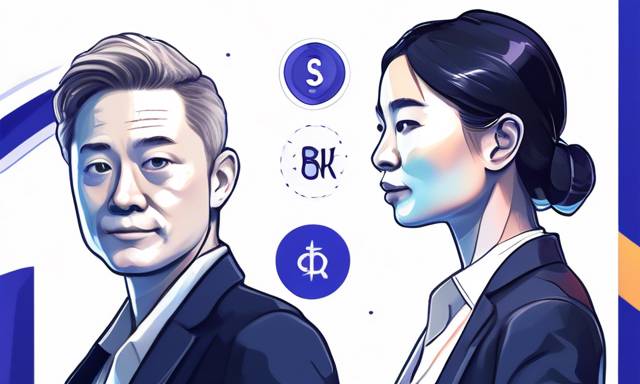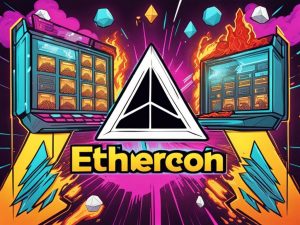Roam’s Physical L1 Model: Redefining Telecom Data Services 🌐
Roam is pioneering a decentralized telecom data network through its innovative Physical Layer 1 model, enhancing market capabilities and driving new discussions within the DePIN space.
The Decentralized Physical Infrastructure Network (DePIN) sector has emerged since 2019, seeing a substantial rise in total token market capitalization reaching billions. Nevertheless, multiple challenges hinder DePIN’s expansion, including a disconnect between user expectations and the existing products, scalability problems, untenable economic frameworks, and insufficient infrastructure growth. As a result, many participants are relegated to mere token speculation, reducing the overall influence of the sector.
An exemplary DePIN project should have the following attributes:
- Clear practical applications
- User-centric products addressing these applications
- Significant market potential
- Robust data foundation
- Credible industry support
Roam distinguishes itself as one of the few projects in this space that satisfies all these essential criteria. With the recent unveiling of its Telecom Data Layer, Roam is establishing a decentralized telecom data network through the Physical L1 model, designed to handle distinct types of data. This infrastructure allows for the creation of meaningful, effective applications that serve users well, elevating Roam beyond conventional DePIN initiatives. By becoming the foundational element of DePIN, Roam vastly broadens its market potential and paves the way for fresh opportunities for innovation.
Fulfilling Real Needs with Creative Solutions 🚀
In the modern world, access to the internet has become as vital as basic utilities. Nonetheless, reliable connectivity is often lacking, particularly for travelers who frequently encounter weak signals, high data costs, repetitive access processes, and tedious registration tasks. Roam is dedicated to creating a global decentralized WiFi roaming network. By employing Decentralized Identity (DID) and Verifiable Credentials (VC) technologies, Roam guarantees users a secure, smooth, and universal wireless experience.
Core Attributes of Roam:
- Global Free WiFi Roaming: Roam’s offerings are free for users, providing unlimited access to WiFi networks globally.
- Global Free Data with eSIM: Users can access free international data via the Roam app, even in places lacking WiFi, ensuring continuous connectivity.
- User-Centric Experience: By quickly registering on the Roam app, users can effortlessly connect to global WiFi networks through Roam’s multi-chain wallet.
- Privacy and Security: The technologies behind DID and VC ensure the protection of user data, while zero-knowledge proofs facilitate identity verification without revealing personal information.
- Token Rewards: Users receive tokens for activities such as registration, referrals, and sharing. Network providers gain tokens by sharing WiFi assets or utilizing Roam routers like the Rainier MAX 60.
- Comprehensive Network Framework: Roam supplies hardware for computing, storage, and connectivity, including WiFi routers and access points, forming the essential structure of its network.
Telecom Data Layer: Advancing Beyond DePIN 🚀
Roam’s latest strategy presents a broader outlook for future advancements. Unlike traditional DePIN projects that mainly concentrate on user engagement at the application level, Roam stretches its vision to the physical infrastructure level. A vast array of Roam mining nodes has been established, each delivering network services while capturing location and time data during interactions. This creates a decentralized telecom data layer, with core data sync to the blockchain in real-time and stored on Solana and other cooperative blockchains. This framework opens doors to broader application scenarios and delivers enriched services to users.
Roam is not solely focused on connecting individuals to devices but extends this connectivity to devices interfacing with one another (Internet of Things), data, and artificial intelligence. While utilizing blockchain technology to craft its digital ecosystem, Roam is not restricted to blockchain data systems alone. It swiftly deploys infrastructure hardware leveraging DePIN advantages and broadens its services beyond the conventional DePIN model. For example, Roam can also facilitate Content Delivery Networks (CDN) and Virtual Private Networks (VPN), positioning itself at a more fundamental level than just the application layer.
Creating a Platform for Varied Uses
The Roam Telecom Data Layer, constructed via the Physical L1 model, lays the foundation for a global decentralized telecom data network rooted in DePIN’s essential layer. This foundational setup enables a wide range of projects to tap into Roam’s Telecom Data Network to develop richer services and different applications—not exclusively tied to WiFi and data traffic. The platform is adaptable, working across various sectors, including information storage, data communication, AI processing, and edge computing to foster a resilient ecosystem that encourages data interoperability and device interconnectivity.
Establishing a data network presents more complexity than creating application layers; however, Roam has demonstrated significant progress. With over 600,000 nodes synchronizing data in real-time, Roam is advancing the creation of a vast Internet of Things network. The ecosystem’s data layer harnesses blockchain technology, where the application of DID goes beyond human users to include devices and AI, moving towards a concept termed “Blockchain of Things (BoT).” This Physical L1 model enhances Roam’s market potential, transitioning it from merely a DePIN project into a platform capable of fostering a thriving ecosystem and generating novel narratives.
Robust Data and Strong Industry Support 💪
Currently, Roam features over 760,000 app users across more than 190 nations, encompassing in excess of 3.5 million OpenRoaming nodes. Users have supplemented this with approximately 710,000 self-built network nodes, solidifying Roam’s position as the third-largest project in this arena according to Depinscan.io.
Notable Industry Endorsements Include:
- Membership with Wireless Broadband Alliance (WBA): Roam stands as the only Web3 Identity Provider (IDP) embraced by the WBA, which sets global standards for the wireless broadband sector. The organization boasts members including giants like AT&T, BT, Boingo, Cisco, Deutsche Telekom, KT, Orange France, True Internet, and TMN/Portugal Telecom.
- Collaborative Technology Alliances: Roam has forged strong partnerships with prominent enterprises and platforms, including Samsung, Cisco, Intel, and Solana.
- Hardware Manufacturing Collaborations: In partnership with Xiaomi’s supply chain, Roam has produced high-quality WiFi routers, notably the Roam Rainier MAX 60 and Roam Baker MAX 30.
- Investment Support: Roam has gained substantial financial backing of tens of millions of dollars through two funding rounds, drawing interest from investors like Anagram, Volt Capital, Comma 3 Ventures, IoTeX, Awesome People Ventures, Crowdcreate, Future Life, Slope, Stratified Capital, JDI Global, ZC Capital, Future 3 Campus, ECMC Group, SNZ, and DePIN Labs. Furthermore, in February 2024, Roam received strategic investment from Samsung Next.
Over the past three years, the Roam team has expanded from an initial five staff members to over 50, with the user base nearing one million. With the recent launch of its Telecom Data Layer and Physical L1 blueprint, Roam is positioned to spearhead a new era of innovation, nurturing a more interconnected and prosperous ecosystem.
Hot Take: Roam’s Vision for the Future ⚡
Roam’s strategic advancements, including the Physical L1 model and Telecom Data Layer, illustrate its commitment to facilitating genuine user needs through innovative technology. The project’s ability to harmonize multiple data types and extend services beyond traditional boundaries sets it apart. As the ecosystem continues to grow and adapt, Roam is poised to contribute significantly to the evolution of decentralized telecommunications.





 By
By

 By
By
 By
By
 By
By